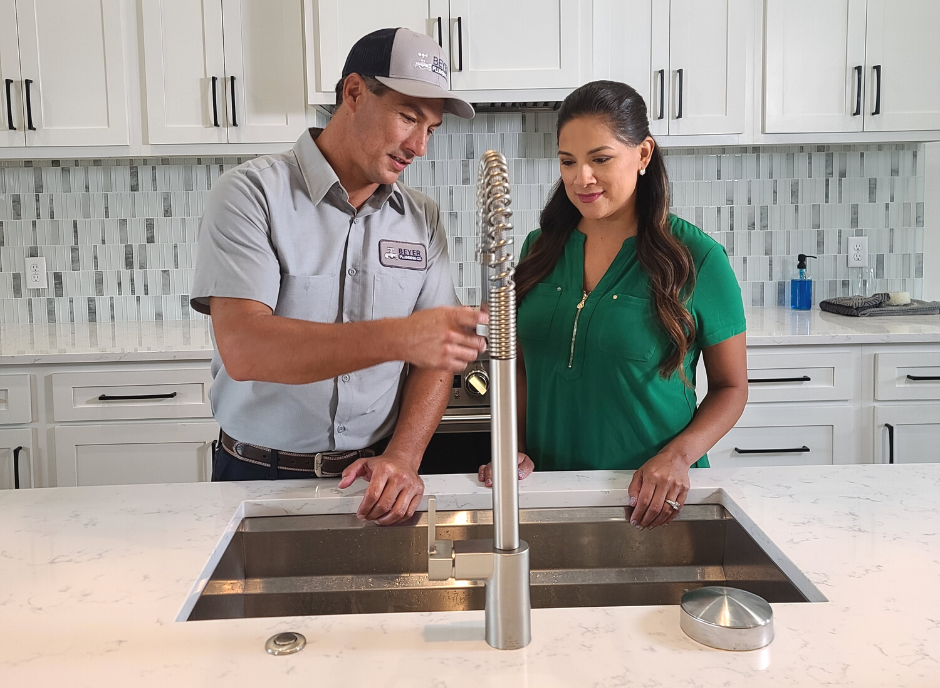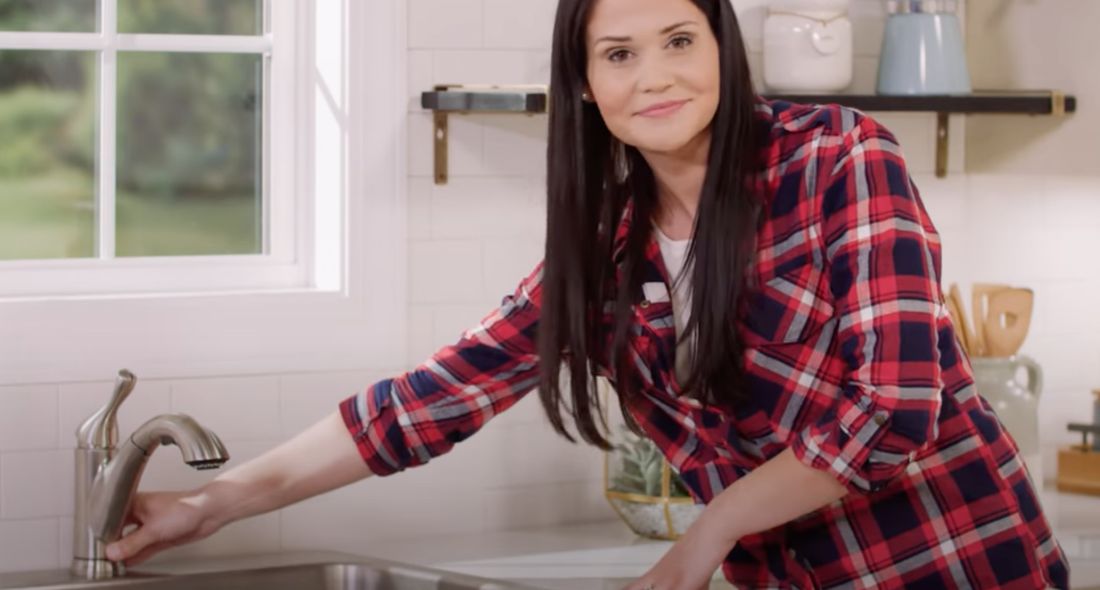The content listed below involving How to Fix a Dripping or Leaky Faucet is exceedingly motivating. You should take a peek.

Dripping faucets could appear like a small hassle, however their influence goes beyond simply the annoyance of the audio. From drainage to incurring unnecessary economic costs and wellness threats, ignoring a leaking tap can bring about various repercussions. In this article, we'll delve into why it's vital to address this common house issue promptly and properly.
Wastage of Water
Environmental Influence
Trickling faucets contribute significantly to water wastage. According to the Environmental Protection Agency (EPA), a solitary faucet dripping at one drip per second can squander more than 3,000 gallons of water each year. This not just strains water resources however additionally influences communities and wildlife dependent on them.
Financial Costs
Boosted Water Expenses
Past the ecological effect, leaking faucets can blow up water costs considerably. The built up waste in time equates into higher utility expenses, which can have been avoided with timely repairs.
Prospective Residential Or Commercial Property Damage
Furthermore, long term trickling can lead to damage to fixtures and surface areas surrounding the faucet. Water accumulation can cause staining, deterioration, and also structural issues if left unattended, leading to additional repair prices.
Wellness Worries
Mold and Mildew Development
The consistent existence of wetness from a dripping tap produces an excellent environment for mold and mildew development. These fungis not only compromise interior air top quality however also position health threats, particularly for people with respiratory conditions or allergic reactions.
Waterborne Conditions
Stagnant water in trickling faucets can come to be a breeding place for germs and other microorganisms, increasing the danger of waterborne diseases. Pollutants such as Legionella germs flourish in stationary water, possibly resulting in major health problems when consumed or breathed in.
DIY vs. Specialist Repair service
Pros and Cons of Do It Yourself Repair
While some might attempt to fix a trickling faucet themselves, do it yourself fixings come with their very own collection of challenges. Without appropriate knowledge and tools, DIY efforts can intensify the concern or lead to incomplete fixings, prolonging the issue.
Advantages of Working With a Professional Plumber
Employing a specialist plumber makes certain that the underlying reason for the leaking tap is resolved effectively. Plumbing technicians have the knowledge and devices to detect and fix tap issues successfully, conserving time and minimizing the risk of more damages.
Step-by-Step Guide to Repairing a Dripping Tap
Tools Needed
Prior to attempting to take care of a dripping tap, gather the necessary devices, including a flexible wrench, screwdrivers, replacement parts (such as washers or cartridges), and plumber's tape.
Usual Faucet Issues and Their Solutions
Recognize the type of faucet and the details issue causing the drip. Common troubles consist of worn-out washing machines, rusty valve seats, or damaged O-rings. Describe manufacturer instructions or on-line tutorials for detailed advice on repairs.
Safety nets
Normal Upkeep Tips
To stop dripping taps, execute regular upkeep such as cleaning up aerators, examining for leaks, and changing worn-out parts promptly. Furthermore, think about installing water-saving devices or updating to a lot more effective fixtures.
Importance of Prompt Services
Attending to leaking faucets as quickly as they're noticed prevents more water wastefulness and prospective damage, inevitably saving both water and cash in the future.
Effect On Home Value
Assumption of Well-Maintained Home
Keeping a residential property in good condition, including addressing upkeep issues like trickling faucets, improves its perceived worth and desirability amongst potential buyers or lessees.
Influence on Resale Worth
Residences with properly maintained plumbing fixtures, consisting of faucets, command greater resale worths in the real estate market. Resolving dripping faucets can add to a favorable impression throughout residential or commercial property assessments and negotiations.
Environmental Duty
Individual Contribution to Preservation
Taking responsibility for taking care of leaking taps straightens with broader initiatives towards water preservation and environmental sustainability. Every individual's activities jointly make a significant effect on protecting priceless sources.
Lasting Living Practices
By focusing on prompt repair work and embracing water-saving behaviors, individuals contribute to sustainable living methods that benefit both existing and future generations.
Verdict
Attending to a trickling tap goes beyond mere comfort; it's a crucial action towards conserving water, decreasing monetary expenses, and protecting health and wellness and home. Whether via do it yourself fixings or specialist aid, doing something about it to deal with trickling taps is a tiny yet impactful method to advertise liable stewardship of sources and add to a healthier, much more lasting future.
How to Fix a Dripping or Leaky Faucet
A leaking faucet is one of the most common problems that homeowners encounter, but it being commonplace doesn’t make it any less annoying. The constant drip drip drip of a leaking bathtub faucet, showerhead, or sink tap can disturb your home’s serenity. Left neglected, a dripping faucet can also result in higher water bills and discoloration or mold growth in your sink or plumbing fixtures.
Fortunately, you don’t have to be a trained plumber to know how to stop a dripping faucet. With some basic tools, replacement parts, and a little patience, leaky faucet repair is a breeze. In this article, we’ll explain what causes dripping faucets and how you can fix them.
What Causes a Leaking Faucet?
Kitchen and bathroom faucets come in all manner of designs, but most involve some combination of valves, O-rings, seals, and washers. The O-ring is usually the weakest link, but any one of these pieces can wear down over time. Heat, moisture, temperature fluctuations, minerals, mold, and movement can contribute to warping and corrosion, breaking the watertight seal. This just comes with the territory of being a homeowner. Everything is always subject to wear and tear, and some component parts of your appliances and fixtures need to be replaced on occasion. At least replacement O-rings are cheap!
More rarely, dripping faucets can be a symptom of excessively high water pressure. Were this the case in your home, you would probably notice that the leak is not isolated to one faucet. Water pressure issues are harder to resolve on your own. We recommend contacting a professional plumber if you suspect your water pressure is too high.
How to Fix a Dripping Faucet
- Pipe wrench or monkey wrench
- Allen wrench set
- Screwdrivers
- Old towel or rag
Shut off the water.
Before you do anything, you need to turn off the water to keep from drenching your kitchen or bathroom. You should find a valve under the sink and against the wall. Once you’ve turned this valve, try turning the faucet on to confirm that the water source has been cut off.
If you can’t locate your local valve for the faucet you’re working on, you can always shut off the water to the house at the main valve. Of course, this will prohibit anyone from using the sinks, showers, or toilets while you’re working on the faucet that’s giving you trouble.
Plug or block the drain.
You’ll be disassembling the faucet and removing some small bits of hardware. Plug the drain with a stopper or rag to avoid the possibility of a small screw falling into your P-trap.
Take apart the faucet assembly.
There are several varieties of kitchen and bathroom faucets, each with its own manner of assembly. For detailed instructions on how to disassemble your faucet, you can refer to the fixture’s manual or contact the manufacturer. If you know whether you have a ball, disc, cartridge, or compression faucet, you can find detailed schematics online.
In general, you need to begin by removing the faucet handles. You might notice a small screw that you’ll need to remove with a screwdriver or Allen wrench. If you don’t see any visible securing hardware, it’s likely hidden under a decorative cap that can be unscrewed or popped off with flathead screwdriver.
Remove each piece methodically, consulting a schematic when necessary. Take notes or arrange the pieces in such a way to make it easier to correctly reassemble the faucet later.
Remove the cartridge.
Once you’ve removed the handles and securing hardware, you should be able to remove the valve cartridge or stem. Some cartridges will slide right out. Other faucet models will require you to loosen a nut with a pipe wrench before you can remove the valve stem.
Examine the exposed hardware.
With the cartridge or stem removed, inspect the component parts. Check the rubber O-rings for wear and tear. Also examine the seat washer for corrosion or other damage. These pieces are usually the responsible parties for a dripping faucet, but it’s worth inspecting the other component parts while you have the faucet disassembled.
Find replacement parts.
Once you’ve identified which faucet component has failed, find an identical replacement. Your local hardware store should have O-rings, seat washers, and other standard components in stock. If you have a luxury or uncommon faucet, you may have to contact the manufacturer for a replacement part.
It’s a good idea to take your old parts with you to the hardware store so you can compare them with the store’s inventory and be sure you’re purchasing the correct replacement.
Reassemble the faucet.
With your new parts in hand, reconstruct the faucet and handles. Don’t be tempted to overtighten screws or nuts. You might think this could create a better seal, but it can instead damage or bend a delicate part of the assembly and create a new problem for you.
Turn on the water and test the faucet.
The only thing left to do is test your work. Unplug the sink, turn the water back on, and try the faucet. Congratulate yourself on a job well done!
https://www.libertyhomeguard.com/how-to-fix-a-dripping-or-leaky-faucet/

I ran across that blog post about Why Are My Faucets Dripping (And Can I Fix It Myself)? while surfing around the search engines. Loved our post? Please share it. Let others check it out. Thank you for your time spent reading it.
Comments on “Why It's Essential to Rectify a Dripping Faucet”